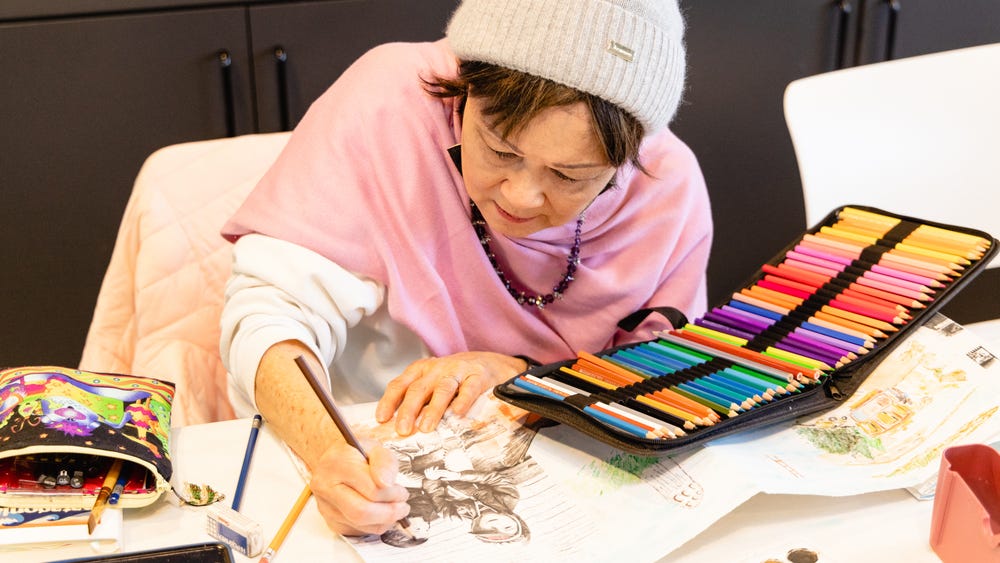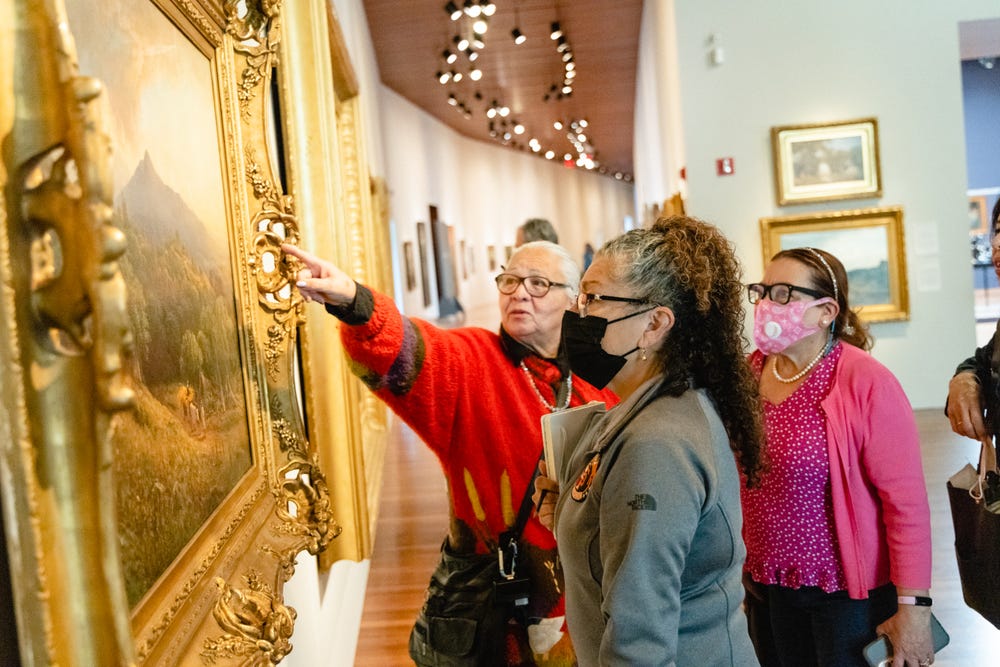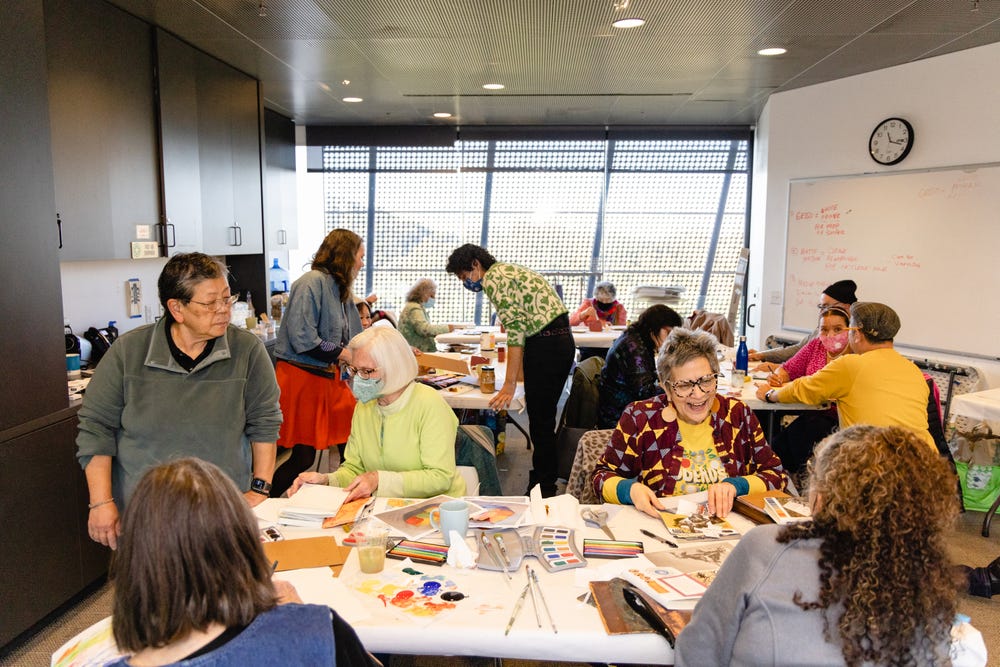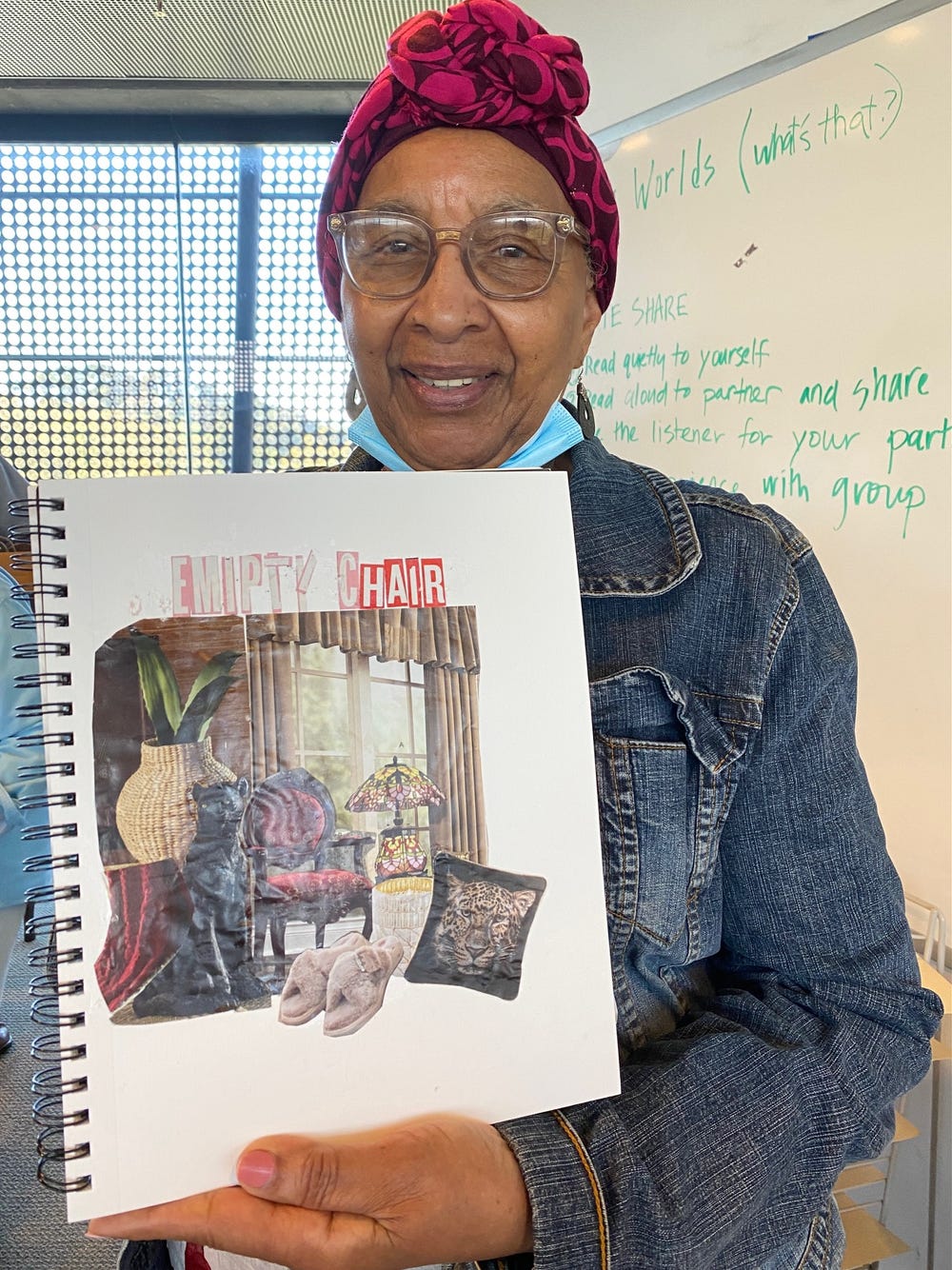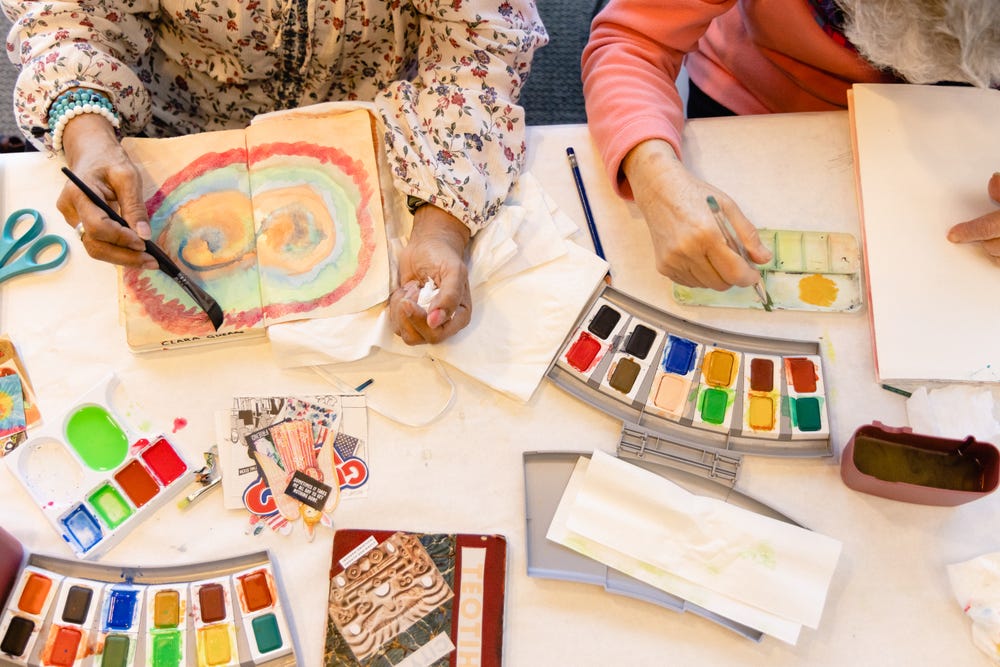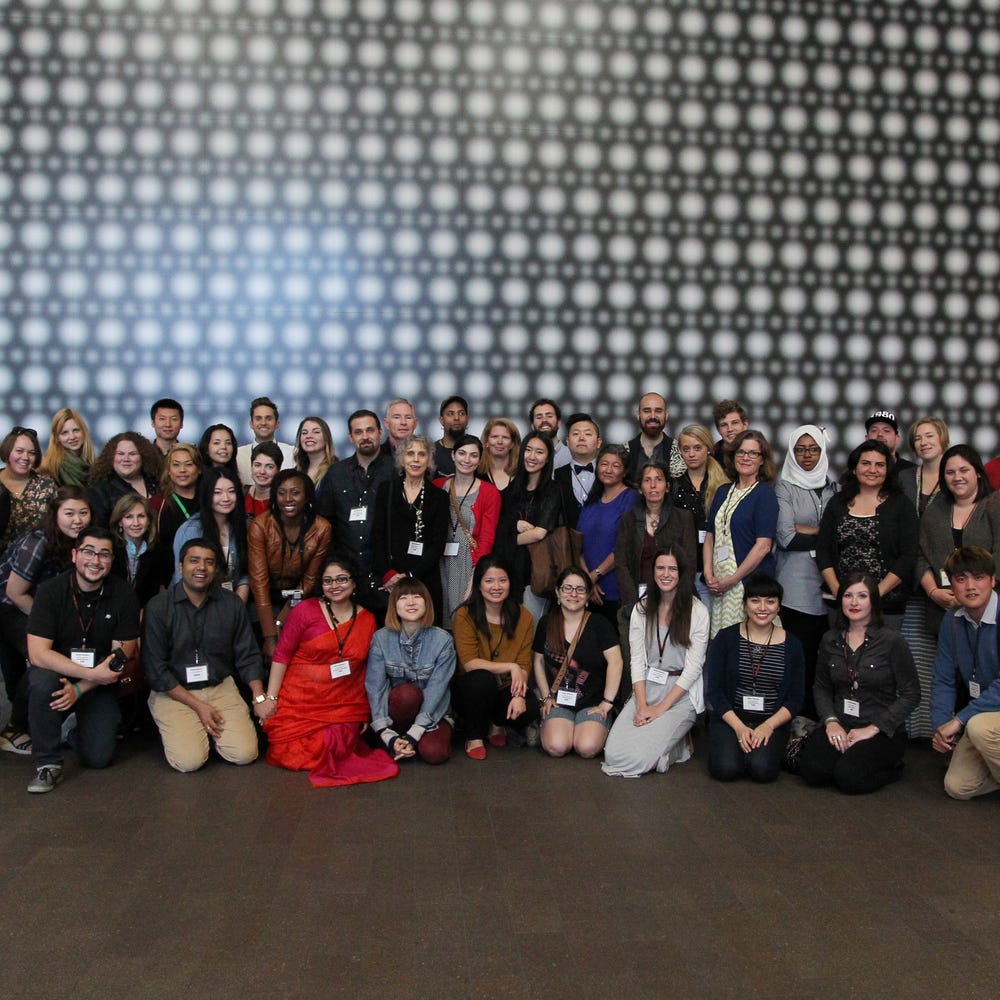Vitality Arts: Making Art with Older Adults
By Jennie Smith, education project manager
November 16, 2023
Image by Andria Lo
Art classes aren’t just for kids. Research shows that older and younger people want the same things — opportunities to creatively express themselves, learn new skills, and make social connections. With a generous grant from E.A. Michelson Philanthropy, we launched Vitality Arts classes for adults 55+ in January of 2023. This inclusive and collaborative program partners with community organizations and artists throughout San Francisco. With over 40% of older adults experiencing loneliness, we know that opportunities to be creative and make connections combat social isolation, improve mood, and increase overall well-being.
Over the course of eight weeks, participants in Vitality Arts classes deepen their understanding of themselves as artists through weekly community circles, gallery visits, and art making. By the end of this year, we will have hosted seven classes. Along with fostering creativity and connection, the program’s goal is to establish sustained relationships with participants and community partners.
Image by Andria Lo
Getting started
We connected with local organizations and community centers (including On Lok Senior Care, Chinatown Community Development Center, and Mission Neighborhood Centers) to learn about the interests and needs of the older adults they serve. To reach our intended audience, we used data analysis and grassroots strategies, including:
- Utilizing an equity map created by San Francisco Recreation and Park
- Visiting community centers in person to meet with activity managers and coordinators
- Offering on-site, drop-in workshops to meet with potential participants
In developing the program, we took the time to learn what types of art classes would excite and engage older adults, while ensuring an inclusive experience. Language and transportation accessibility were two critical factors; we worked with bilingual instructors (Spanish and Cantonese) and arranged for transportation to the de Young. Because we actively addressed and removed barriers preventing older adults from coming to the museum, many participants expressed feeling more welcomed and seen, and had a stronger sense of belonging in the museum space.
Image by Andria Lo
Connecting through conversation + creativity
Our hope and goal for everyone who signs up for a Vitality Arts class is continued visits to the de Young and participation in our free public offerings, from Sketching in the Galleries to community workshops and lectures. By creating art in our studio spaces and working with an experienced artist, participants feel pride and a greater awareness of the museum as a space for them. Beyond the studio experience, each group spends time in the galleries, engaging in activities and conversations that center individuals’ perspectives and life experience as it relates to the art.
On the final day of class, one participant shared that while she had never felt very connected to the museum, after spending time in conversation with fellow participants, she was seeing connections between her own life and the art. She found herself slowing down and looking in a way that felt new. She has since returned for a Vitality Arts Meetup, a bi-monthly gathering that reunites past participants.
Image by Jennie Smith
Vitality Art classes uplift the voices of older adults throughout San Francisco during a time in their lives when many feel unseen. The experiences participants have during this period of their lives provide an opportunity to access deep creativity and meaning in the art they create. In the new year, once classes conclude, every Vitality Arts participant will be invited to exhibit an artwork in a celebratory exhibition.
Takeaways
First and foremost, the classes deeply enrich the lives of participants. One memorable example is an exchange that occurred after a participant missed a class because she was in the hospital. When she arrived the following week, she shared: “This class keeps us going!”
Image by Andria Lo
Additional takeaways:
- With over 25% of the city’s population expected to be 60 or older by 2030, it is important for us to offer creative opportunities for community members of all ages.
- Remaining in close contact with community partners fosters long-term relationships.
- Once people feel a sense of belonging, they find ways to return.
- Participants are most excited about classes created through a highly collaborative approach, with organizations already working with the community.
As we look to the future of our community engagement programming, the partnerships we have developed and fostered through this project will continue to inspire and inform the work ahead: creating inclusive, creative experiences both inside and outside the museum, fostering the well-being of makers of all ages, and keeping the arts and our community vital!
